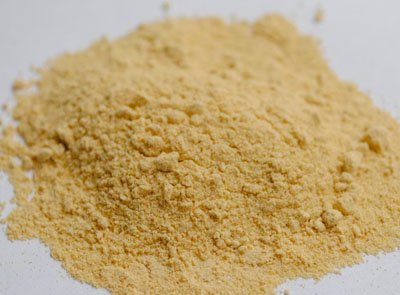Running and Testosterone Levels
You may have wondered “does running increase testosterone levels”?
Research suggests that running can increase testosterone levels in both men and women. One study found that men who engaged in endurance exercise, such as running, had higher levels of testosterone than those who did not exercise.
Similarly, a study of female athletes found that those who ran longer distances had higher levels of testosterone than those who ran shorter distances.
Testosterone is an important hormone that plays a vital role in muscle growth, bone density, and sexual function. While lifting weights and strength training are commonly associated with increased testosterone levels, there is evidence that running can increase testosterone levels and products.
However, the relationship between running and testosterone levels is complex and influenced by several factors, including diet, resistance training, and high-intensity interval training (HIIT).
In this article, I will explore the latest research on running and testosterone levels and provide practical tips for runners who want to optimise their testosterone levels.
Key Takeaways
- There is evidence that to answer the question “running increase testosterone levels?” in both men and women.
- A balanced diet and resistance training can also help boost testosterone levels.
- HIIT may be a more effective way to increase testosterone levels than steady-state cardio.
Running and Testosterone Levels
As a form of exercise, running can have many physical and mental health benefits. But what effect does running increase testosterone levels? In this section, I will explore the relationship between running and testosterone levels.
Can running increase testosterone levels?
Studies have shown that running can increase testosterone levels, but the extent of the increase depends on various factors such as the intensity and duration of the exercise.
Endurance training, such as treadmill running and long-distance running, can lead to a decrease in testosterone levels if done excessively. However, sprinting has been shown to increase testosterone levels significantly.
How much does sprinting increase testosterone levels?
Sprinting is a high-intensity exercise that can lead to a significant increase in testosterone levels.
One study found that men who did six 35-second sprints on a stationary bike with a 10-second rest period between each sprint had a 21% increase in testosterone levels.
Another study found that men who did four to six 30-second sprints on a treadmill had a 17% increase in testosterone levels.
It’s important to note that the increase in testosterone levels from sprinting is temporary and returns to baseline shortly after the exercise is complete. However, regular sprinting can lead to long-term increases in testosterone levels.
In conclusion to the question, can running increase testosterone levels, it can, but the extent of the increase depends on various factors such as the intensity and duration of the exercise.
Sprinting has been shown to increase testosterone levels significantly, while endurance training can lead to a decrease in testosterone levels if done excessively.
Influence of Diet on Testosterone Levels
One factor that can significantly impact testosterone levels is diet. Here are some key nutrients that have been shown to influence testosterone levels:
Protein
Protein is essential for building and repairing muscle tissue. It also plays a critical role in hormone production, including testosterone. Studies have shown that increasing protein intake can lead to a significant increase in testosterone levels.
Good sources of protein include lean meats, fish, eggs, and dairy products.
Zinc
Zinc is a mineral that is essential for testosterone production. Low levels of zinc have been linked to decreased testosterone levels. Foods that are high in zinc include oysters, beef, pork, chicken, beans, and nuts.
Vitamin D
Vitamin D is a fat-soluble vitamin that is produced by the body when exposed to sunlight. Low levels of vitamin D have been linked to low testosterone levels.
Foods that are high in vitamin D include fatty fish, egg yolks, and fortified dairy products.
Carbs
Carbohydrates are an important source of energy for the body. Studies have shown that low-carb diets can lead to a decrease in testosterone levels.
It is important to consume an adequate amount of carbohydrates, especially if you are a runner. Good sources of carbohydrates include fruits, vegetables, whole grains, and legumes.
Ashwagandha
Ashwagandha is an herb that has been used in traditional medicine for centuries. It has been shown to have a positive effect on testosterone levels. Studies have shown that supplementing with ashwagandha can lead to a significant increase in testosterone levels.
Ginger
Ginger is a spice that has been shown to have a positive effect on testosterone levels. It has been found to increase testosterone levels in animal studies.
While more research is needed to determine its effects in humans, adding ginger to your diet is a simple and tasty way to potentially boost testosterone levels.
In conclusion, diet plays a significant role in testosterone production. By consuming a diet rich in protein, zinc, vitamin D, and carbohydrates, and incorporating herbs like ashwagandha and spices like ginger, runners can potentially increase their testosterone levels and improve their performance.




Resistance Training and Testosterone
Another question that often comes up is whether resistance training, such as weightlifting or strength training, can increase testosterone levels and therefore improve athletic performance.
According to a study published in PubMed, testosterone is considered the major promoter of muscle growth and subsequent increase in muscle strength in response to resistance training in men.
This means that resistance training can be an effective way to increase testosterone levels and improve athletic performance.
However, it is important to note that the effects of resistance training on testosterone levels may vary depending on the individual.
For example, a study published in Healthline found that resistance training can temporarily increase testosterone levels in women, but the effects may not be as significant as in men.
When it comes to the type of resistance training, free weights and other forms of resistance training that target large muscle groups are generally considered to be the most effective for increasing testosterone levels.
This is because these types of exercises require more effort and can lead to greater muscle growth and strength gains.
Overall, while resistance training can be an effective way to increase testosterone levels and improve athletic performance, it is important to consult with a healthcare professional before starting any new exercise regimen.
Additionally, it is important to remember that the effects of resistance training on testosterone levels may vary depending on the individual, and that other factors such as diet and sleep also play a role in athletic performance.
High-Intensity Interval Training (HIIT) and Testosterone
I have always been fascinated by the benefits of high-intensity interval training (HIIT). HIIT involves short bursts of intense exercise followed by periods of rest or low-intensity exercise.
Many people believe that HIIT can increase testosterone levels, which is a hormone that plays a crucial role in muscle growth and recovery.
Research has shown that HIIT can indeed increase testosterone levels in men. In a study published in the Journal of Strength and Conditioning Research, researchers found that six weeks of HIIT increased free testosterone levels in male masters athletes.
Another study published in the Journal of Endocrinology and Metabolism found that HIIT increased testosterone levels in healthy young men.
However, it is important to note that the increase in testosterone levels may not be significant enough to cause noticeable changes in muscle growth or strength. Additionally, the effects of HIIT on testosterone levels may vary depending on factors such as age, fitness level, and workout intensity.
Despite this, HIIT has many other benefits that make it a great addition to any fitness routine. HIIT can improve cardiovascular health, increase fat loss, and improve overall fitness levels.
Additionally, HIIT workouts can be done in a short amount of time, making it a convenient option for those with busy schedules.
In conclusion, while HIIT may increase testosterone levels, the effects may not be significant enough to cause noticeable changes in muscle growth or strength. However, the many other benefits of HIIT make it a great addition to any fitness routine.
Long-Term Strategies to Boost Testosterone
As someone who is interested in running, I have been wondering about the long-term strategies to boost testosterone. After researching the topic, I have found that there are several ways to naturally increase testosterone levels.
One of the most important things to keep in mind is that consistency is key. It’s not enough to just run once or twice a week, but instead, it’s important to make running a habit. By making running a regular part of your routine, you can help boost your testosterone levels over time.
Another important factor in boosting testosterone levels is recovery. Resting is just as important as running, as it gives your body time to recover and repair. It’s important to incorporate rest periods into your training schedule, as well as getting enough sleep each night.
In addition to running, strength training can also be beneficial in boosting testosterone levels. By adding weightlifting or bodyweight exercises to your routine, you can help increase muscle mass and improve overall fitness.
Finally, it’s important to maintain a healthy diet. Eating a balanced diet with plenty of protein, healthy fats, and vegetables can help support testosterone production.
On the other hand, a diet high in processed foods and sugar can have a negative impact on testosterone levels.
Overall, by making running a habit, incorporating rest periods, strength training, and maintaining a healthy diet, you can help naturally boost your testosterone levels over time.
Frequently Asked Questions
Does running increase testosterone levels?
Some studies have shown that running increase testosterone levels in both men and women. However, the increase in testosterone levels may not be significant enough to have a noticeable effect on muscle growth or athletic performance.
What exercise increases testosterone levels the most?
Strength training exercises, such as weightlifting and resistance training, have been shown to increase testosterone levels the most. These exercises cause the muscles to work harder, which can stimulate the body to produce more testosterone.
Does cardio increase testosterone levels?
Yes, cardio exercises, including running, can increase testosterone levels in both men and women. However, the increase in testosterone levels may not be significant enough to have a noticeable effect on muscle growth or athletic performance. It is important to note that the type, intensity, and duration of the cardio exercise can affect the amount of testosterone produced.
How to naturally increase testosterone levels?
There are several natural ways to increase testosterone levels, including:
- Eating a balanced diet that includes protein, healthy fats, and complex carbohydrates
- Getting enough sleep and managing stress levels
- Engaging in regular exercise, including strength training and cardio
- Taking certain supplements, such as vitamin D and zinc
It is important to note that while these methods may help increase testosterone levels, they may not be effective for everyone and should be done under the guidance of a healthcare professional.
